MAVCOR Journal is an open access born-digital, double blind peer-reviewed journal dedicated to promoting conversation about material and visual cultures of religion. Published by the Center for the Study of Material and Visual Cultures of Religion at Yale University and reviewed by members of our distinguished Editorial Board and other experts, MAVCOR Journal encourages contributors to think deeply about the objects, performances, sounds, and digital experiences that have framed and continue to frame human engagement with religion broadly understood across diverse cultures, regions, traditions, and historical periods.
A special issue guest edited by Kambiz GhaneaBassiri and Anna Bigelow.
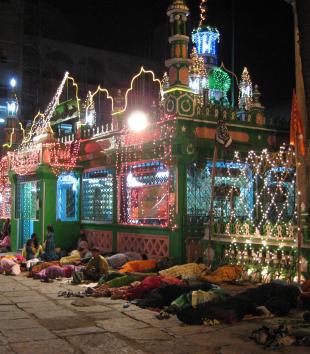 Senses of Belonging: Materiality, Embodiment, and Attunement at Sufi Shrines in India
In exploring the multiple modalities of Muslim belonging and unbelonging in India, the arenas in which Muslims and non-Muslims interact, especially at shared holy places, are extremely illuminating locales. This essay explores the ways in which material and somatic forms of interreligious encounter at a Sufi dargah (درگاہ), or tomb shrine, in Bengalaru (Bangalore) exemplify everyday as well as spectacular practices of shared piety that also reimagine the possibility of collective belonging in a time of precarity.
Senses of Belonging: Materiality, Embodiment, and Attunement at Sufi Shrines in India
In exploring the multiple modalities of Muslim belonging and unbelonging in India, the arenas in which Muslims and non-Muslims interact, especially at shared holy places, are extremely illuminating locales. This essay explores the ways in which material and somatic forms of interreligious encounter at a Sufi dargah (درگاہ), or tomb shrine, in Bengalaru (Bangalore) exemplify everyday as well as spectacular practices of shared piety that also reimagine the possibility of collective belonging in a time of precarity.
 Bībī kā ʿAlam
Bībī kā ʿAlam
The Bībī kā ʿalam, as it is popularly known, occupies a special, sacred class of ʿalams for the Hyderabadi Shiʿa. Containing Fatimah’s funerary plank, is a reliquary ʿalam and, while Hyderabad is distinctive for the extraordinary number of relics it possesses that are associated with the Imams and Ahl-e Bait, very few connect to Shiʿi women saints.
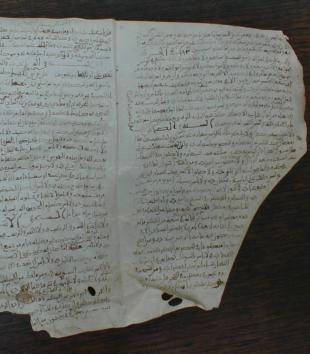 A tenth-century Islamic manuscript from Kairouan, Tunisia
A tenth-century Islamic manuscript from Kairouan, Tunisia
A parchment bifolio from the Kairouan collection presents a mystery. But like pottery in an archeological dig, this fragment is in situ, and clues to the identity of the author, the text, and the community of scholars that wrote and preserved it, are found in the rich context of this unique collection. Together, these manuscripts bear witness to a fascinating history of literary and cultural production, not only in North Africa, but in the broader Islamic world of the ninth and tenth century.
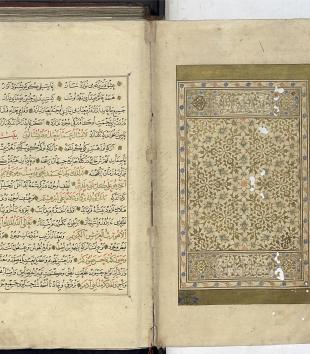 Adorning the King of Islam: Weaving and Unraveling History in Astarabadi’s Feasting and Fighting
Adorning the King of Islam: Weaving and Unraveling History in Astarabadi’s Feasting and Fighting
This article traces a fourteenth-century Persian history from Anatolia, Bazm wa Razm (Feasting and Fighting), written by ʿAzīz al-Dīn Astarābādī, from its presentation copy to its various recensions down to the modern period, examining how each era visually refigures this textual manifestation of its original patron, Burhān al-Dīn Aḥmad (r. 783-800 AH/1381-1398 CE), for a new purpose.
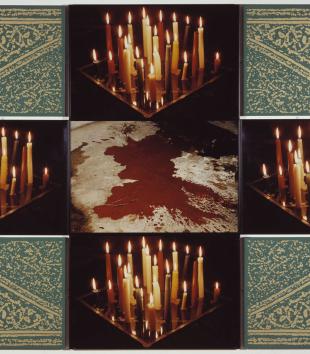 Rasheed Araeen’s Bismullah
Rasheed Araeen’s Bismullah
Rasheed Araeen’s Bismullah is noteworthy as the first work by the Karachi-born, London-based artist to enter the collection of Britain’s Tate Gallery in 1995. Bismullah deploys strategies of juxtaposition, disjunction, and doubling to combine visual imagery that references religion, empire, art history, and the artist’s personal biography. Through its montage tactics Bismullah not only maps the binaries of self and other that structure colonial discourse within and beyond the artistic field, but also recontextualizes these signifiers.
 Hikmet Barutçugil's Hüdayi Yolu
Hikmet Barutçugil's Hüdayi Yolu
Hüdayi Yolu represents a modern artist’s loving depiction of his hometown and neighborhood, an homage to a local Sufi saint, the romanticized communal memory of Istanbul as an Ottoman metropolis, and Barutçugil’s approach to “Sufi” art.
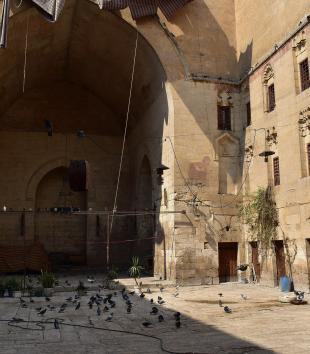 On the Material and Social Conditions of Khalwa in Medieval Sufism
On the Material and Social Conditions of Khalwa in Medieval Sufism
Ubiquitous across the medieval Islamic world, khalwa is the practice of self-isolation, typically in a small cell, in order to focus on pious devotions. This article offers one possible approach to theorizing the heterogenous elements of khalwa coherently by insisting that we take the material and the social as seriously as we do the human and the spiritual.
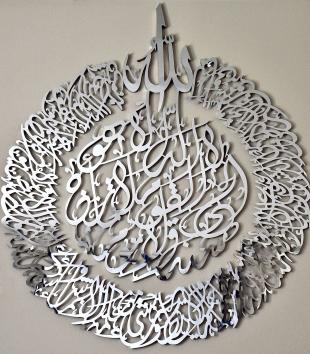 Ayat Al Kursi Round
Ayat Al Kursi Round
Crowned by the word “Allah,” a dense piece of Arabic calligraphy carved out of stainless steel wraps around an embellished center. The text is the ayat al-kursī, or “The Throne Verse,” a portion of the Qur’an (2:256) often recited before sleep or travel because of its reputation for spiritual and physical protection. While the Illinois-based company Modern Wall Art produces the above “Ayat Al Kursi Round,” at least six other businesses manufacture their own ayat al-kursī pieces in the same circular visual style. These pieces of Islamic decor appeal to different tastes in spite of the repetitiveness of their visual content. By attending to the specific production method and branding of “Ayat Al Kursi Round,” we can identify how the materialization of God’s words in wall art entangles Islamic ethics and the aesthetics of class formation.
 Depicting Kongo and Angola in the Seventeenth and Eighteenth Centuries
Depicting Kongo and Angola in the Seventeenth and Eighteenth Centuries
As part of their activities in Kongo and Angola Capuchin Franciscan friars created dozens of images and wrote hundreds of pages of text in works that they called "practical guides." These Capuchin didactic images form an exceptionally important corpus that enriches our knowledge of central Africa and dramatically multiplies the European-format visual record about the African continent before 1800.
 Nature, Culture, and Faith in Seventeenth-Century Kongo and Angola
Nature, Culture, and Faith in Seventeenth-Century Kongo and Angola
Early modern central Africa comes to life in the images that Capuchin friars. This Capuchin central African corpus consists today in four extant manuscripts connected by form and content. This essay offers additional visual material from the corpus by featuring details of each individual vignette that comprise the 1650s poster now in the Museo Francescano, as well as the unpublished versos of the Parma Watercolors that feature text.
 The Black Cross
The Black Cross
Donald Jackson’s The Black Cross illustrates some of the ways contemporary calligraphic art engages sacred writ: through the interplay of word and image, recording the artist’s physical gestures, and making visible the divine.
 Models of a Bygone World: Popular Nineteenth-Century Nativity Scenes as a Representation of Chilean Society
Models of a Bygone World: Popular Nineteenth-Century Nativity Scenes as a Representation of Chilean Society
Embracing the belief that the humblest of individuals participated in Jesus’s birth with their presence and their gifts alongside the wisest, Christians of every era have wished to display their own participation and contribution to this foundational Christian event. This article describes the ways in which a traditional, rural-inspired society like that of Santiago, Chile at the end of the nineteenth and the beginning of the twentieth centuries expressed itself through its nativity scenes.
Guest edited by Amy Holmes-Tagchungdarpa and Kalzang Dorjee Bhutia in collaboration with MAVCOR Journal Editor Emily C. Floyd. The call for papers for this special issue invited scholars coming from diverse disciplines (religious studies, anthropology, archaeology, history of art, visual studies, etc) and working across a range of high altitude ecologies, from the Andes to the Himalayas and beyond, to consider how the specificities of these regions impact material and visual aspects of religious practice. This special issue is published on a rolling basis.
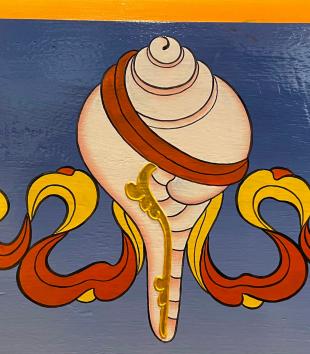 Flying Conches in the High-Altitude Oceans of the Himalayas: Displaced Objects and Multiscalar Relations in the Mountains of Sikkim
Flying Conches in the High-Altitude Oceans of the Himalayas: Displaced Objects and Multiscalar Relations in the Mountains of Sikkim
Conch shells frequently appear as objects in religiously inspired artwork and shrines in Sikkim, west India. Their frequent appearance in material culture and invocation in Classical Tibetan-language literary culture is indicative of a rich repository of connections. This essay explores some of their many resonances, in particular their significance as indicators of ecological change in the Himalayas.
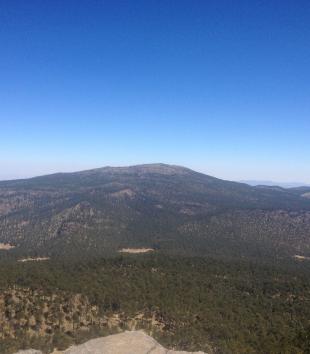 The Ritual Ascent at Mount Tlaloc, Mexico
The Ritual Ascent at Mount Tlaloc, Mexico
Bridging ecology, ethnohistory, linguistics, and art historical inquiry, this article argues that the various forms of vegetation encountered along the slope of Mount Tlaloc during the ascension of the tlahtoque were of ritual significance within Nahua worldview.
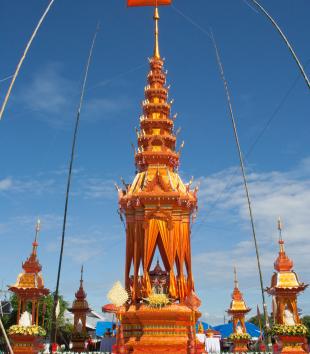 Gold Palaces: Merit, Beauty, and Perfection in the Cremation Structures of Monks in Northern Thailand
Gold Palaces: Merit, Beauty, and Perfection in the Cremation Structures of Monks in Northern Thailand
Cremation structures serve the utilitarian purpose of incinerating a corpse to aid transition from life to death, but in contemporary practice in Northern Thailand, opulent, golden-colored cremation structures called prasat sop also create a stunning sight that give local viewers a deeper understanding of all sentient beings’ connection to death.
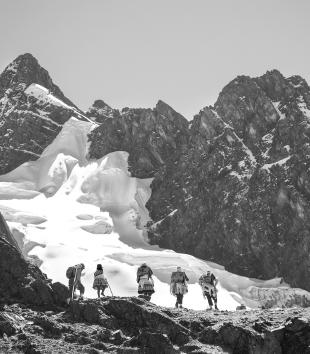 Qoyllur rit’i: El señor de la Estrella de Nieve
Qoyllur rit’i: El señor de la Estrella de Nieve
En 2012 empecé a hacer un registro gráfico del peregrinaje que poco a poco se convirtió en un proyecto fotográfico. Al intentar comprender este mundo sincrético, la fotografía me permitió plasmar y narrar lo que veía.
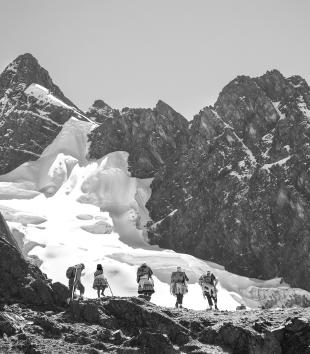 Qoyllur rit’i: The Lord of the Snow Star
Qoyllur rit’i: The Lord of the Snow Star
In 2012, I began to make a graphic record of the pilgrimage, which little by little evolved into a photographic project. In attempting to comprehend the syncretic world of the festival, photography allowed me to capture and narrate what I saw.
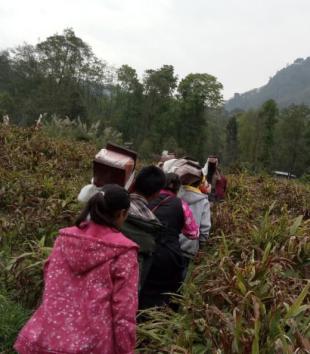 The Book as a Generative Agent: The Buddhist Canon as a Community Member in Book Procession Rituals of the Himalayas
The Book as a Generative Agent: The Buddhist Canon as a Community Member in Book Procession Rituals of the Himalayas
Known as the Bumkor, the books that make up the Bum are not just objects, but are generative, active agents that are capable of producing and renewing auspiciousness in the local human and nonhuman community that reside in the landscape.
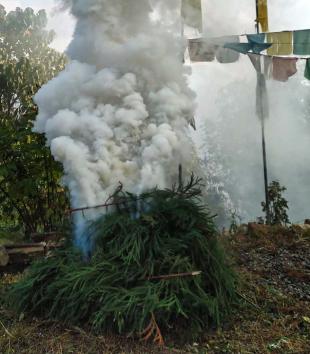 Purifying Multispecies Relations in the Valley of Abundance: The Riwo Sangchö Ritual as Environmental History and Ethics in Sikkim
Purifying Multispecies Relations in the Valley of Abundance: The Riwo Sangchö Ritual as Environmental History and Ethics in Sikkim
The Riwo Sangchö is a ritual exchange that facilitates smoky relations between humans and spirits resident in landscapes around the world.
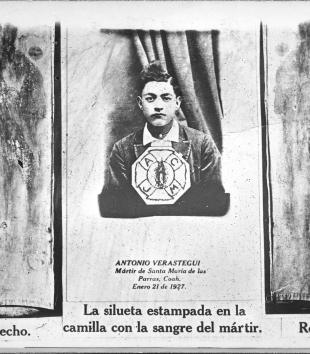 Photographic Postcard Commemorating Antonio Verástegui
Photographic Postcard Commemorating Antonio Verástegui
A postcard commemorating a young “martyr” of Mexico’s Cristero War named Antonio Verástegu engages the spectator in an act of witnessing that entails both religious and political consequences.
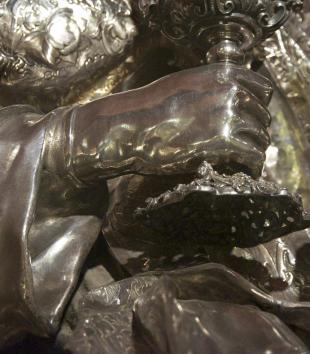 Colonial Materiality: Silver’s Alchemy of Trauma and Salvation
Colonial Materiality: Silver’s Alchemy of Trauma and Salvation
Embedded in power relations, coloniality, and matters of purification, early modern silver was a particularly generative site. Might its peculiar paradoxes be usefully thought in terms of a materiality of trauma?
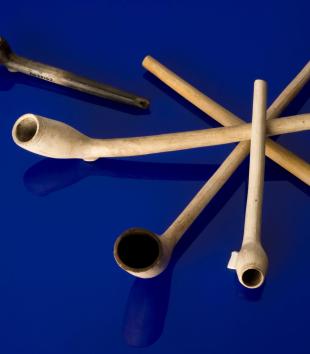 Material Technologies of Empire: The Tobacco Pipe in Early Modern Landscapes of Exchange in the Atlantic World
Material Technologies of Empire: The Tobacco Pipe in Early Modern Landscapes of Exchange in the Atlantic World
The look and shape, feel and function of the tobacco pipe footnote the transformational features of the early modern Atlantic world: landscapes of exchange.
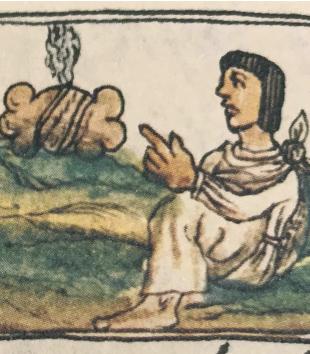 Locking Eyes with the Sun: Perception, Landscape, and the Fame of Greenstone in a Sixteenth-Century Nahuatl Narrative
Locking Eyes with the Sun: Perception, Landscape, and the Fame of Greenstone in a Sixteenth-Century Nahuatl Narrative
A narrative describing interactions between a human knower, sun, and precious stones enables a new interpretation of Nahua accounts of precious stones releasing vapors, while also providing greater insight into the nature of sensory experience in Nahua thought more generally.
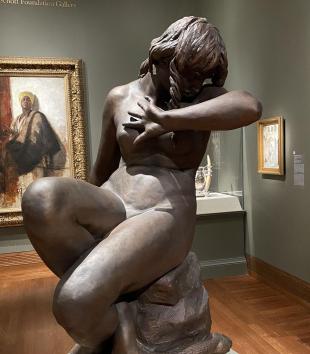 Moses Jacob Ezekiel, Eve Hearing the Voice
Moses Jacob Ezekiel, Eve Hearing the Voice
In 1876, Moses Jacob Ezekiel, the first Jewish American artist of international stature, sculpted the world’s first woman, to which he gave the title, Eve Hearing the Voice.
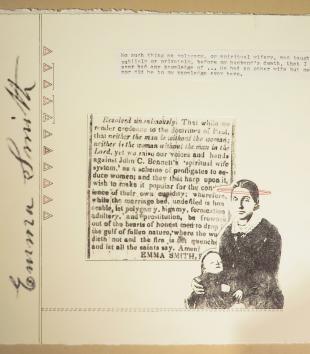 Art, Religious Memory, and Mormon Polygamy
Art, Religious Memory, and Mormon Polygamy
What happens when part of the religious history a person believes in turns out to be incorrect?
 Mural Paintings, Church of the Summer Residence of the Maronite Patriarch, Diman
Mural Paintings, Church of the Summer Residence of the Maronite Patriarch, Diman
Since its construction around the turn of the twentieth century, Our Lady of Diman has served as the summer residence of the Maronite Catholic Patriarch. The prestige of the building is everywhere apparent: in the inlaid marble floor, in the gold and blue panes of the stained-glass windows. The church’s most remarkable feature, however, is the ceiling over its nave, with frescoes completed in the late 1930s by celebrated Lebanese painter Saliba Douaihy (1913-1994).
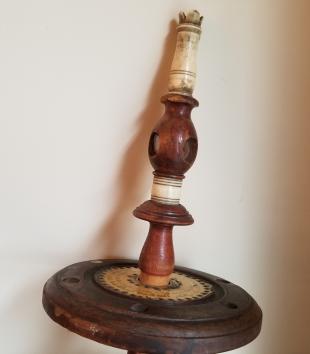 A Stick of Wood, a Tree of Life
A Stick of Wood, a Tree of Life
This Ets Chayim, a Tree of Life, is obsolete, redundant, out of time and out of place. It is detached both from the Torah scroll for which it was made, and from its mate that once served that scroll’s other end. It is not supposed to be here anymore—here, that is, in a transformed, glass-sheathed, twenty-first-century Lower East Side, where the traces of immigrant life have been erased, sanitized, and gathered into museums, or commodified as “atmosphere” for an urban playground. Perhaps the act of marking it—noting its persistence beyond obsolescence, shorn of the text to which it was once an auxiliary, bereft of the hands that once grasped it and the congregation that once stood as it was lifted up—is a minor act of resistance in itself.
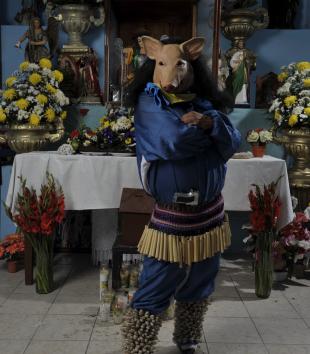 Fernando Brito and Héctor Parra, Judío
Fernando Brito and Héctor Parra, Judío
In Judío, photographer Fernando Brito attempts to find an ad-hoc visual representation for the Yoremem or Mayo Indians in his native state of Sinaloa, Mexico. This portrait pays tribute to the foundational value of the community’s ritual, which combines indigenous cosmology with seventeenth-century Jesuit influence, as crucial to its survival and cohesion.
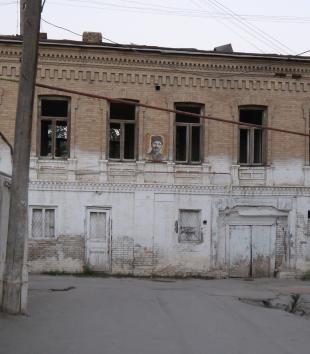 A Dying House in Samarkand’s Jewish Neighborhood
A Dying House in Samarkand’s Jewish Neighborhood
Pagiel Leviyev’s house is very sick. Built in Samarkand over a century ago, the structure was designed as a mansion for a wealthy mercantile family. Today, it stands as a crumbling reminder of the Jewish community’s long and complex history in this unexpected spot of the world.
This special joint issue is published with The Journal of Southern Religion (JSR). The journals issued a call for papers together in 2017 and are pleased to publish these four peer-reviewed articles, two editorial introductions, and one editorial reflection. In his editorial reflection, Bill Ferris considers his own history with southern religion and material culture. Jason Young and Louis P. Nelson offer introductions for the four articles, with additional reflection on the state of the field.
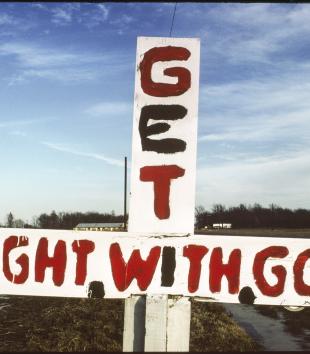 Material and Visual Cultures of Religion in the American South
Material and Visual Cultures of Religion in the American South
Described by Flannery O’Connor as “Christ-haunted,” southern identity is and always has been shaped by religion. The still familiar sight of churches and hand-painted religious signs along highways and roads are powerful reminders of religion throughout the region. As the field of Southern Studies has evolved, so has our understanding of religion and its expression in material and visual culture in the region.
 Critical Reflections on Visual and Material Religion
Critical Reflections on Visual and Material Religion
This joint edition of MAVCOR Journal and the Journal of Southern Religion has focused needed attention on the ways that visual and material cultures have played and continue to play a critical role in shaping religious belief and practice in the American South. The very kind offer by the editors to write an editorial introduction to the edition encouraged me to reflect a bit more deeply on the trajectories of recent scholarship and some of the holes I see in the current historiography.
 On the Religion of Things
On the Religion of Things
Though often perceived as an arena of human life devoted exclusively to the ethereal, the actual practice of religion, not to mention our study of it, is mediated through the material circumstances of life.
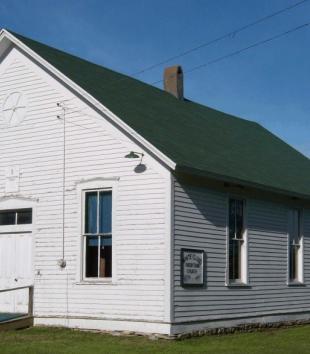 The Second Great Awakening and the Built Landscape of Missouri
The Second Great Awakening and the Built Landscape of Missouri
The simple, gable-end church form was suited to the material circumstances and to the socio-theological climate of the Second Great Awakening. Gable-end churches provided an affective and sensorial locus for newly created communities to position themselves as extensions of an evangelical Protestant national consciousness.
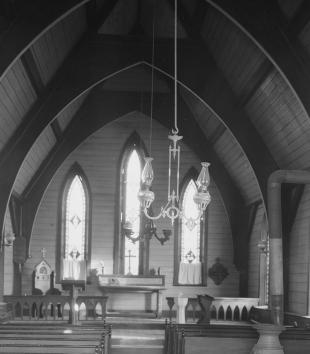 “A Doorkeeper in the House of My God”: Female Stewardship of Protestant Sacred Spaces in the Gulf South, 1830-1861
“A Doorkeeper in the House of My God”: Female Stewardship of Protestant Sacred Spaces in the Gulf South, 1830-1861
The movement to build and furnish new churches in the Antebellum South was not the moment of Protestant women’s religious domestication, but rather an opportunity for a new type of public stewardship of the church, one that encouraged female collective action. Women expressed their piety and leadership in the church by enhancing its materiality, they gave their churches permanence and social status.
 Horseshoe Crosses and Muddy Boots: Material Culture and Rural Masculinity in Cowboy Churches
Horseshoe Crosses and Muddy Boots: Material Culture and Rural Masculinity in Cowboy Churches
In a large pasture in West Texas, thirty-five men and women sit mounted on horseback and forty more stand around them. Sitting astride a horse in front of them is their pastor, next to another man holding a large American flag. He reads to them from the Bible of the wondrous changes brought by the Lord and then invites them to church the next day. With this simple invocation, the pasture roping at the local cowboy church is now underway.
 Uncle Tom’s Bibles: Bibles as Visual and Material Objects from Antebellum Abolitionism to Jim Crow Cinema
Uncle Tom’s Bibles: Bibles as Visual and Material Objects from Antebellum Abolitionism to Jim Crow Cinema
Stowe’s deployments of bibles and artistic representations of them in illustrated editions offered a conservative abolitionism that emphasized the potential for peace among former slaves and masters. . . . bibles in the afterlives of Uncle Tom’s Cabin continued to offer moderation when it came to issues of race and racial interactions.
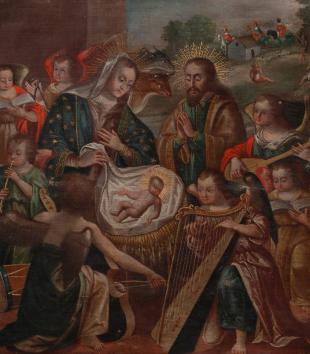 Audible Paintings: Religious Music and Devotion to the Infancy of Christ in the Art of the Viceroyalty of Peru
Audible Paintings: Religious Music and Devotion to the Infancy of Christ in the Art of the Viceroyalty of Peru
Paintings are silent, but not to those who know how to listen. Some paintings appeal to the sense of hearing in order to stimulate the beholder’s emotional engagement. For eighteenth-century nuns living in the Viceroyalty of Peru, paintings could evoke Latin polyphony or villancicos, songs in the vernacular performed in sacred contexts.
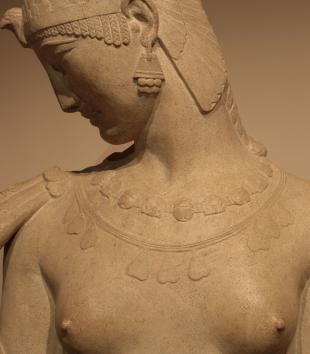 Modern Art in Egypt and Constellational Modernism: A New Approach to Global Modern Art
Modern Art in Egypt and Constellational Modernism: A New Approach to Global Modern Art
To challenge the problematic narratives of modernity, perpetuated by both traditional and emergent approaches to modernism, Egyptian modern art should be analyzed through a new paradigm called, “constellational modernism.”
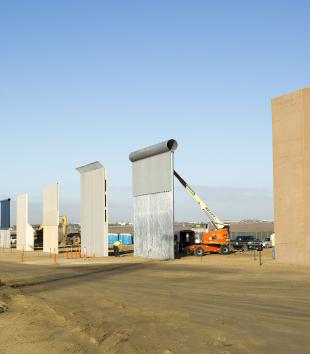 Trump’s Wall: A Monument of (Un)Civil Religion?
Trump’s Wall: A Monument of (Un)Civil Religion?
Trump has relentlessly pushed for a “monument” that cannot be torn down or simply relocated: the wall.
 Adobe and Stone Churches of New Mexico: A Selection
Adobe and Stone Churches of New Mexico: A Selection
The architecture of New Mexican village churches is often described as vernacular, which is to say that the construction materials (adobe, stone, vigas, latillas) are local; the design reflects local taste, tradition, and resources; the construction standards are idiosyncratic, pursuant to the experience, inclinations, and skills of the builders; and the finished product represents the history and cultural identity of the community.
 Elijah Pierce and Material Conversions
Elijah Pierce and Material Conversions
Obey God and Live (Vision of Heaven) is Elijah Pierce’s personal conversion narrative. In this piece of wood he depicted the definitive episode of his own spiritual autobiography, an event in his past that he understood to (re)organize, interpret, and frame his entire life.
 Street Altars in Mexico City
Street Altars in Mexico City
This series of images, taken over the course of six months, documents the street altars dotted around Mexico’s dense, urbanized capital, home to over twenty-one million people.
 Miki Kratsman, Diptych from The Resolution of the Suspect
Miki Kratsman, Diptych from The Resolution of the Suspect
In The Resolution of the Suspect, photographer Miki Kratsman builds on the reliquary nature and the transitive qualities of the carte-de-visite, creating a diptych: the historic image on one page of the centerfold and his own photograph of the bloody garment of a single unnamed Palestinian martyr on the other.
 Georgia O’Keeffe, Black Cross with Stars and Blue
Georgia O’Keeffe, Black Cross with Stars and Blue
In 1929, on her first visit to New Mexico, the American artist Georgia O’Keeffe (1887-1986) observed the animate potential of the region’s religious material culture.
 The Canopy Tomb of Edward Shippen Burd
The Canopy Tomb of Edward Shippen Burd
This American monument may even present an understudied alternative vision of the afterlife—one incorporating an intermediate phase just after death—that runs through nineteenth-century Protestant and Anglo-Episcopal sources.
 Reconstructing the Faces of the Saints, an Interview with Friar Luis Enrique Ramírez Camacho, O. P.
Reconstructing the Faces of the Saints, an Interview with Friar Luis Enrique Ramírez Camacho, O. P.
In 2014 the Dominican Order in Peru worked with Brazilian NGO EBRAFOL to produce digital facial reconstructions of Peruvian saints Rose of Lima, Martin of Porres, and John Macías.
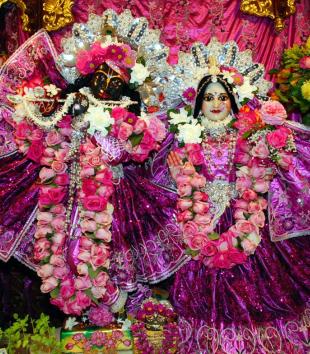 Nruhari Das on Material Culture and Krishna Consciousness
Nruhari Das on Material Culture and Krishna Consciousness
Ashley Makar interviewed Nruhari Das on September 22, 2012 at the Sri Sri Radha Govinda Mandir ISKON Hare Krisha Temple in Brooklyn, New York.
 Shep Parson on Material Culture and Protestant Ministry
Shep Parson on Material Culture and Protestant Ministry
Ashley Makar interviewed Shephard (Shep) Parsons in 2011 when Parsons was minister at Shelton Congregational Church in Shelton, Connecticut. He is currently Senior Pastor at First Church of Christ, Woodbridge, Connecticut.